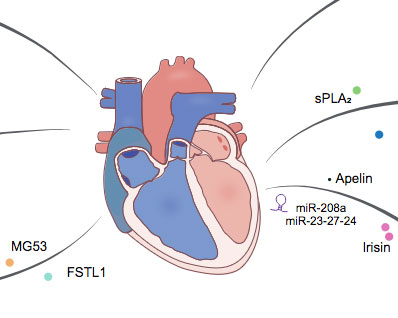Ayelén M. Santamans, Beatriz Cicuéndez, Alfonso Mora , María Villalba-Orero, Sanela Rajlic, María Crespo, Paula Vo, Madison Jerome, Álvaro Macías, Juan Antonio López, Magdalena Leiva, Susana F. Rocha, Marta León, Elena Rodríguez, Luis Leiva, Aránzazu Pintor Chocano, Inés García Lunar, Ana García-Álvarez, Pablo Hernansanz-Agustín, Víctor I. Peinado, Joan Albert Barberá, Borja Ibañez, Jesús Vázquez, Jessica B. Spinelli, Andreas Daiber, Eduardo Oliver & Guadalupe Sabio.
Pulmonary hypertension (PH) can affect both pulmonary arterial tree and cardiac function, often leading to right heart failure and death. Despite the urgency, the lack of understanding has limited the development of effective cardiac therapeutic strategies.
Our research reveals that MCJ modulates mitochondrial response to chronic hypoxia. MCJ levels elevate under hypoxic conditions, as in lungs of patients affected by COPD, mice exposed to hypoxia, and myocardium from pigs subjected to right ventricular (RV) overload. The absence of MCJ preserves RV function, safeguarding against both cardiac and lung remodeling induced by chronic hypoxia. Cardiac-specific silencing is enough to protect against cardiac dysfunction despite the adverse pulmonary remodeling. Mechanistically, the absence of MCJ triggers a protective preconditioning state mediated by the ROS/mTOR/HIF-1α axis. As a result, it preserves RV systolic function following hypoxia exposure.
These discoveries provide a potential avenue to alleviate chronic hypoxia-induced PH, highlighting MCJ as a promising target against this condition







